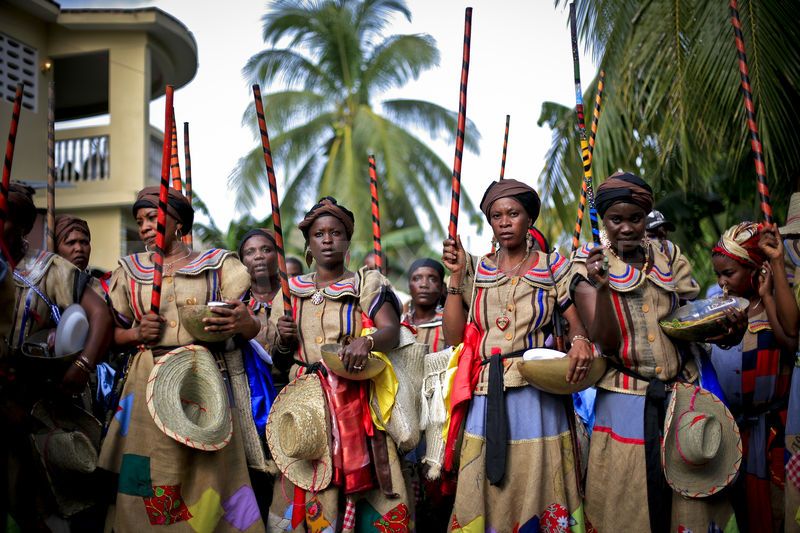Every year, pilgrims from all over Haiti travel for the festival known as the
Plaine du Nord Festival. Among the locals who speak Haitian Kreyol, the festival is known as the Plen Dino Festival and usually takes place in July.

Plain du Nord or Plen Dino is not just the name of a festival, it is the name of the settlement on the northern border of the country that lies between the Massif de Nord mountain and the Atlantic Ocean. The small town has a population of close to 40,000 people who are widely known to be a Creole and Maroon community that has managed to preserve a great part of their African culture.

The festival’s name does not only stem from the fact that it originates within the Plain Du Nord but also because it is the location where the slave revolt and war that led Haiti to gain its independence began. It is believed that both the free maroons and enslaved Africans gained power from the spirits they worshipped who led them to start the war and gain their independence.

The festival is also a celebration and worship of the god Ogou, who in Nigeria and parts of Benin is worshipped and acknowledged as the warrior god of metal.
During the 2-day festival, the pilgrims who come from near and far including Creoles from other Caribbean countries come together to march up to the St. Jacques’ hole, a sacred mud pool where several will have spiritual baths and rebirth similar to baptism.
The pilgrims are expected to come with sacrifices to the gods while the high priestess and other priests march up with bullocks which will also be sacrificed. Sacrifices are made using chickens, goats, cows and sheep which would be slaughtered.

While several pilgrims wear dark colours, preferably black or red, some of the priestess and priest who come with their congregation wear similar attires with colours relating to whatever their mission is.

Each person who comes to seek a spiritual bath is assisted by a priest who prays with them and baths them in the mud pool. During the ritual, the priest or priestess uses herbs and scented incense as well. Children are often brought for the bath and held upside down.

After the spiritual bath, sacrifices are then made to the gods near the cross in the mud hole. It is expected that the High priestess does the first killing of her bullock before other smaller priests and priestesses follow suit sacrificing the many animals that their people bring. The blood is used to cancel any sins, please the gods and serve as an investment into a fertile year. Usually, the blood is poured on the giver who is then expected to pray and give praise for a successful sacrifice.

At night, a ritual candlelit dance and singing routine is held. The significance of the ceremony is to be in the presence and company of the gods and ancestors. During this ceremony, several people go into a trance doing and saying things they cannot remember.
There is less eating and drinking during the festival and the hunger strike is to pay homage to the warriors who fought for freedom.
The festival is a way to help present-day Creoles have a feel of what their warriors went through as well. Due to its close link with several Voodoo festivals in West Africa and the negative connotations that are attached to Voodooism, the festival is labeled as dark and evil.










